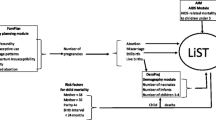Abstract
In general, national family planning programs in several countries have relied largely on voluntary acceptance of contraception as a means of regulating population growth. However, it is well known that voluntary family planning programs, even when highly successful, may often fail to achieve demographic goals such as zero growth. In these situations, measures have been recommended that ‘go beyond family planning’ in an attempt to influence the number of children couples choose to have. Singapore has successfully used legislation to achieve its desired demographic changes. This success, within a legal framework, is unique and may be used as a model for other countries where voluntary participation in national family planning programs has failed.
Abortion-related maternal mortality may be compared appropriately with the risk to life associated with carrying a pregnancy to term. In Singapore, the overall mortality following abortion has declined substantially—from 15 abortion related deaths between 1968-1970 to no abortion related deaths in the years 1980-1983. We believe this decline is due to the replacement of illegal by legal abortions (enhanced by liberalized legislation) and improvements in the quality of services and efficient treatment of complications.
Furthermore, with an increase in the number of legal abortions, the crude birth rate has shown a dramatic decline from 29.5 per 1,000 population in 1965 to 16.2 per 1,000 in 1983. This has resulted in smaller family sizes with greater access to socio-economic assets of the country leading to healthier mothers and a significant improvement in their reproductive performance. The perinatal mortality has declined from 25.5 per 1,000 in 1965 to 10.6 per 1,000 in 1983. Similarly the infant mortality rate has declined from 26.3 in 1965 to 9.4 per 1,000 in 1983.
Access this chapter
Tax calculation will be finalised at checkout
Purchases are for personal use only
Preview
Unable to display preview. Download preview PDF.
Similar content being viewed by others
References
Bangladesh Fertility Survey 1975-1976. Ministry of Health and Population Control. Population Control and Family Planning Division, Government of the People’s Republic of Bangladesh, First Report, Dhaka, 1978.
Berelson, B. Beyond family planning. Studies in Family Planning 38:1, 1969.
Cates, W., Rochat, R. W., Grimes, D. A., et al. Legalized abortion: Effect on national trends of maternal and abortion-related mortality (1940 through 1976). American Journal of Obstetrics and Gynecology 132(2):211, 1978.
David and Kingsley. Population policy: Will the current programs succeed? Science 58:730, 1967.
Egypt. Central Agency for Public Mobilization and Statistics (CAPMAS). The Egyptian Fertility Survey 1980, volume 4. Cairo, World Fertility Survey p. 357, 1983.
Kee, W. F., Loh, M. In: Family planning programs. World Review eds. W. B. Watson and R. J. Laphan. Studies in Family Planning 6,8:136, 1973.
Lim, L. S., Cheng, M. C. E., Rauff, M., Ratnam, S. S. Abortion deaths in Singapore 1968-1967, Singapore Medical Journal 20:391, 1979.
Lincoln, R. FDA committee: no support for pill-breast cancer link, but cervical cancer connection more ambiguous. International Family Planning Perspectives 10:27, 1984.
Liskin, L. S. Complications of abortions in develo** countries. Population Reports, Series F, 6:105, July 1980.
Population Reference Bureau, World Fertility: A chart of age—specific fertility rates for 120 countries. Washington D.C., January 1981.
Singapore Family Planning and Population Board Annual Reports, 1968-1984.
Statistics from Registrar of Births and Deaths, Singapore, 1982-1983.
Tietze, C. Induced Abortion: A World Review. The Population Council, New York, 1981.
World Health Organization (WHO), Induced abortion: Report of a WHO scientific group, WHO Technical Report Series No. 623, Geneva, 1978.
Author information
Authors and Affiliations
Editor information
Editors and Affiliations
Rights and permissions
Copyright information
© 1986 Plenum Press, New York
About this chapter
Cite this chapter
Singh, K., Viegas, O., Ratnam, S.S. (1986). The Effects of Legislation of Abortion on Maternal and Perinatal Outcome. In: Landy, U., Ratnam, S.S. (eds) Prevention and Treatment of Contraceptive Failure. Springer, Boston, MA. https://doi.org/10.1007/978-1-4684-5248-8_15
Download citation
DOI: https://doi.org/10.1007/978-1-4684-5248-8_15
Publisher Name: Springer, Boston, MA
Print ISBN: 978-1-4684-5250-1
Online ISBN: 978-1-4684-5248-8
eBook Packages: Springer Book Archive




